1.4 Preface
In this new work, we have combined our efforts with Scientific American to produce an innovative textbook designed to engage and motivate introductory psychology students as they explore and learn the fundamental concepts of psychology. In planning and writing this book, we benefited significantly from extensive needs-based research conducted by Worth Publishers. This research focused on identifying the most common challenges facing instructors teaching the introductory course, both in traditional classrooms and online.

Written in a stimulating, journalistic style and featuring distinct pedagogical and content characteristics, this text is meant to be a student-friendly introduction to psychology that readily applies compelling scientific information to everyday life. Many years of teaching introductory psychology have taught us the value and necessity of helping students connect with the material. They want to learn about concepts and issues that are practical and relevant to their lives. The research conducted by Worth Publishers clearly and consistently reinforced the importance of achieving a higher degree of student engagement. Thus, we set out to write a text with stimulating content that would offer students a model for thinking critically about a complex world filled with behaving, emoting, and thinking humans.
We also recognize that a student’s learning experience does not end with the printed text. Accordingly, we have created a text that marries the printed page with the online space, and uses multimedia to seamlessly reinforce concepts. The online experience of this text—and the digital authorship of its components—are not an afterthought. We have worked equally hard in curating the online lessons that accompany the book in LaunchPad and in composing the questions in LearningCurve, its online adaptive quizzing system.
What’s Different and Why
An emphasis on engagement and comprehension
The combination of our teaching experience, our partnership with Scientific American, and the knowledge we have gleaned from needs-based research has led to the creation of an innovative text with several distinctive characteristics. These characteristics, which combine to enhance student engagement and comprehension, are described here:
- Stories of real people, which provide a relevant and meaningful context for the psychological concepts presented, are seamlessly integrated throughout each chapter. These stories also provide real-world examples of strength and resilience.

- There are free, easy-to-access Online Video Profiles of people featured in the chapters. These “In Their Own Words” and “You Asked, They Answered” segments engage students on a personal level. Assessable versions of the Online Video Profiles also exist in LaunchPad and incorporate thoughtful questions that tighten the link between the video and the chapter content, creating a more relevant and memorable learning experience.

- Our authorship extends beyond the printed book and into the digital space. As instructors with experience teaching traditional, online, and hybrid courses, we have curated LaunchPad, the online course space, ourselves—ensuring that the online experience complements the printed text and supports assessment in accordance with learning outcomes.

- The unique partnership with Scientific American has infused a journalistic style throughout the text, particularly through the involvement of co-author Coco Ballantyne, a science writer who came to the project directly from Scientific American. In addition, enrichment material from the magazine is provided in a feature titled From the Pages of Scientific American—one or more of which appear in each chapter.
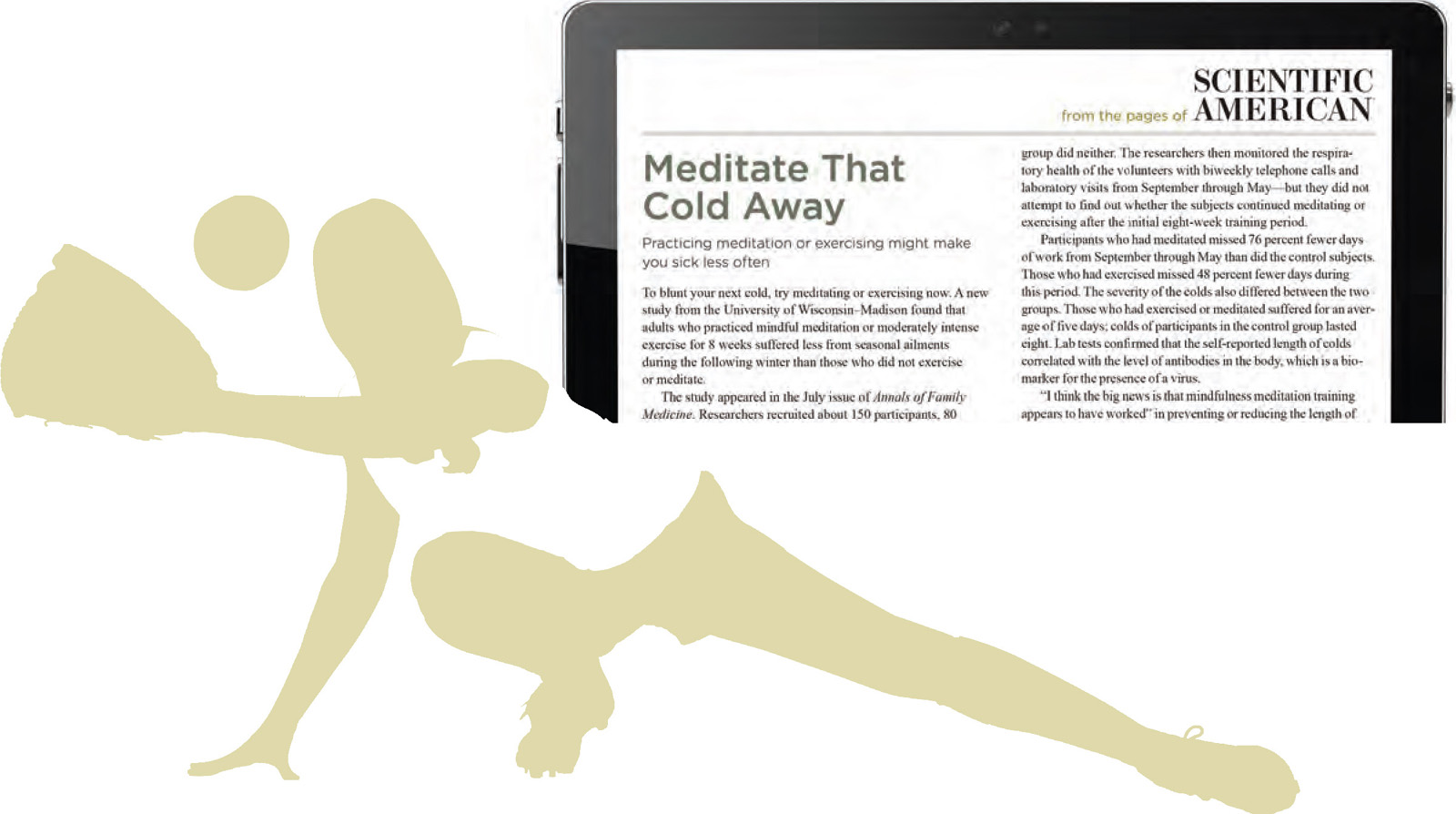
- Infographics, 50+ full-page visual presentations are integrated throughout the text, combining concepts and/or data into a single, storyboard format (patterned after those featured in Scientific American). The majority illuminate concepts identified through research as the most challenging for instructors to teach and students to master. Examples include communication within neurons, and positive and negative reinforcement and punishment.
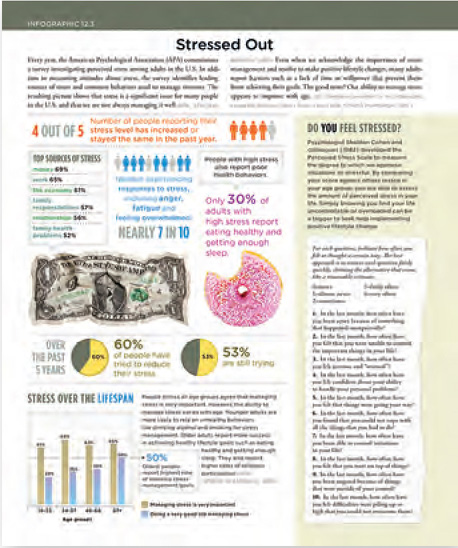
- Integrated thematic features emphasizing conceptual relationships and everyday relevance are woven throughout the text. There are seven feature themes representing different topics in contemporary psychology. For each chapter, we have chosen only those themes that logically and directly reinforce content. They are seamlessly integrated into the narrative, never relegated to a “box” or an aside.
- Connections appear liberally throughout, beginning in Chapter 2. These annotated cross-references to material covered in previous chapters explain the relationships between topics, helping students understand the “big picture” issues in psychology.
CONNECTIONS
- All substantive content, including the stories and thematic features, flows within the narrative in an uninterrupted fashion. This absence of boxes places all coverage on an equal footing and allows examples to occur precisely where they are needed to illuminate and reinforce concepts.
Compelling Life Stories Woven Through Each Chapter
Stories stimulate interest and help students connect concepts with real life.

Stories are often the key to how we organize information and apprehend meaning in the world around us. Most textbook authors understand this, and many texts contain opening vignettes to introduce each chapter. Similarly, their pages are peppered with examples to help students apply and grasp material along the way.
This text is different. It integrates the compelling stories of real people with essential psychological content throughout the chapter. Students encounter both famous figures, such as NBA star Jeremy Lin (Chapter 5), and everyday people who find themselves in extraordinary circumstances, like Liz Allen, the mother of deaf-blind triplets (Chapter 3). The stories of these people are tightly interwoven into the body of the chapter, helping students comprehend and recall critical material. Students do not have to guess how psychology relates to everyday life because our stories dovetail the content with the application. In other words, we return to the same human stories throughout the chapter, linking psychology content to the lives of real people.

We have intentionally chosen people from all walks of life, providing a diverse spread of gender, culture, race, age, nationality, and occupation. (See tables p.1 and p.2 on pages xx–xxi for a full list of gender and cultural coverage throughout the book.) Your students will read about an Iraq War veteran, an immigrant from Somalia, a neuroanatomist, and a community college student balancing work, school, and parenting. Our goal is for every student to see aspects of him- or herself in the stories presented in this book. We also aim to convey a strong sense of optimism. Our stories typically feature ordinary people who encounter difficult circumstances but persevere and grow nevertheless.
When we say this book has a journalistic element, we really mean it. Most of the chapter stories are based on direct interviews with subjects—not simply background information gathered from secondary sources. Interview questions have been content driven, or designed to gather information that reinforces chapter concepts.
| Culture and multicultural topics are covered on the following pages: |
|
| Topics relating to gender are covered on the following pages: |
|
Online Video Profiles of Featured Stories
Videos allow students to know the people we have featured in a more personal way.
Videos of people featured in the book accompany most chapters and are strategically placed to complement written content. All videos are free and easily accessed via students’ mobile devices (by scanning the QR code in the text) and computers (by using the URL that appears under the QR code).
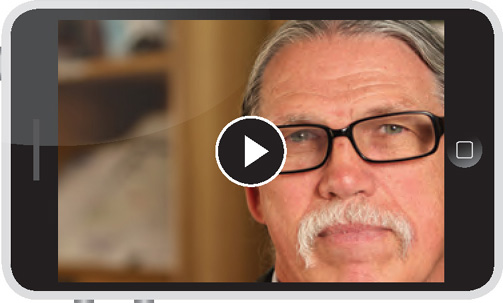
The first video, “In Their Own Words,” introduces the person and important themes of his or her story, answers questions, and provides thought-provoking, and often poignant, commentary. The shorter “You Asked, They Answered” clips are interspersed elsewhere in the chapter, showing the same individuals answering questions posed by students who reviewed the manuscript. These student-generated questions are associated with chapter concepts and provide perspective as to how the reader perceives the person being interviewed. Within LaunchPad, our curated online course space, students find the Online Video Profiles again, only this time as assessable capstone activities for each chapter. Instructors can assign the Online Video Profiles within LaunchPad and require students to answer questions linking the video to important chapter content. Students will never wonder how these stories relate to the course material: The quizzes highlight the connection and reinforce key concepts.
Digital Authorship That Extends Beyond the Book
The online course space complements the printed text.
As professors who have taught traditional, online, and hybrid courses, we understand the importance of digital materials. Many texts divorce their media content from the written content, so that the online experience seems bolted onto the text. Our book is integrated with digital materials in LaunchPad, Worth’s online course space. There, you’ll find online materials that truly echo the features of the book—and use online tools to enhance them. Examples are the assessable versions of the Online Video Profiles and infographics. We’ve composed the LearningCurve adaptive quizzes in LaunchPad ourselves, to ensure that they match the text seamlessly. And we’ve curated the LaunchPad units so that they reflect the online lessons we use in our own classes. We truly believe that it is not enough for writing and multimedia simply to exist side by side. For instructors to teach effectively, they must be in conversation with each other. Our goal has been to create a text and online system that is in tune with the way contemporary students experience the text and multimedia together.
Engaging Visual Program with Unique Infographics
Our visuals help students understand processes and combine related concepts.
Students are bombarded with different forms of visual media, and they have come to expect visual representations of concepts. Textbooks have responded to this development with flashy magazine-style images and engaging photos. Again, based on extensive research with instructors and students, including those in our own classes, our text seeks to find a desirable middle ground between the visual clutter of contemporary texts and the traditional, less stimulating pages of those from the past. Ours is one in which visuals are consciously used to augment and reinforce students’ understanding of critical and more challenging concepts.
Working closely with experienced science illustrators, we have developed infographics with introductory psychology students in mind. Our visuals are attractive and modern, but they have been conceived and developed for their pedagogical value, not their flash. Many of these infographics were inspired by the whiteboard illustrations we create to elucidate concepts in our own classes. Others have been suggested by our thoughtful and creative manuscript reviewers.
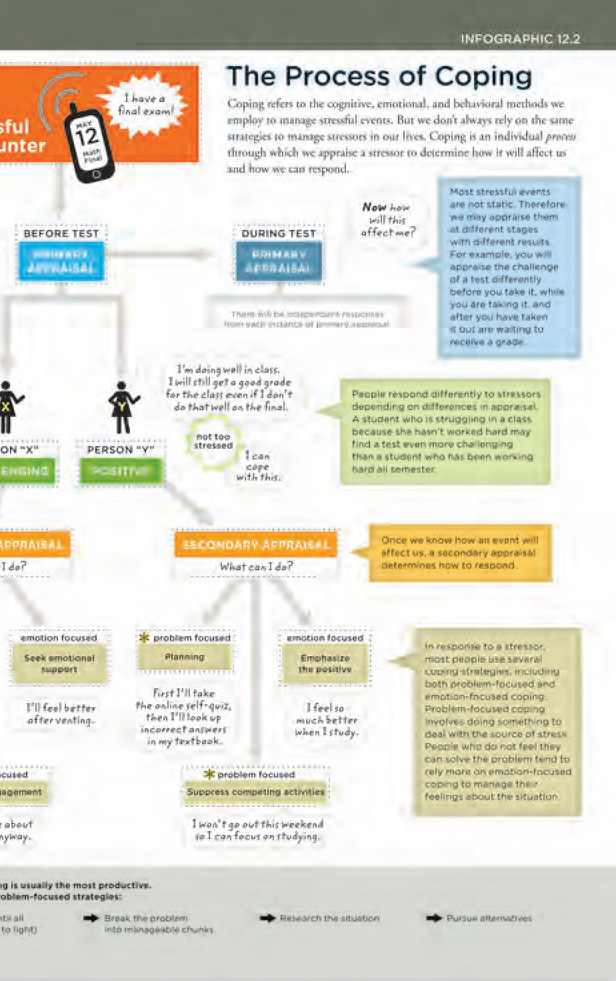
Clear and easy to navigate, these full-page infographics combine stimulating images with straightforward explanations in a format that is accessible to the novice psychology student. All chapters include at least two infographics, and many contain three or more. These learning tools are designed to accomplish one or more of the following:
- Describe a step-by-step process or tell a sequential story.
- Compare two concepts that are distinct but well suited to being presented together in a fresh context. For example, we’ve included four theories of emotion in one infographic to show how each explains the sequence of events leading to an emotion.
- Provide visual representations of data so students who are new to statistics can easily grasp complex analyses.
There is another reason our infographics differ from those found in other texts: They can stand alone. By reviewing and studying an infographic, students can examine concepts without necessarily referring to the main text, making them a great study and review tool. That being said, our infographics also provide an excellent way to reinforce material in the narrative. Finally, use of the infographics is not limited to the printed page. Online in LaunchPad, we’ve made assessable versions of the infographics, which quiz students on their content and encourage them to make connections with everyday life.

Integrated Thematic Features
Our thematic features seamlessly enhance understanding of core material.
Most introductory textbooks contain a standard or uniform set of boxes that provide enrichment content. Unfortunately, many students see the outline of the box and skip right over it because they believe it lacks importance or is “unnecessary” content they will not need to master for tests. Instructors may not even assign these boxes if they seem superfluous—not only to their students, but also to them.

We strongly believe enrichment features should deepen and build on students’ understanding of chapter concepts. This perspective, fully reinforced by the publisher’s research, led us to eliminate boxes and embed this content within the narrative. Our thematic examples and applications always occur precisely where they provide maximal reinforcement of concepts, and seamlessly flow within the chapter narrative. The intent of this approach is to have students continue reading, that is, not stop because they see a box with information (sometimes set off to the side, at other times marginalized by a surrounding border). In other words, we have taken this important content out of the box. We use small labels to identify the features so that they are recognized, but not set apart.
The seven themes for the integrated features are described below. We chose these features because they are both relevant and practical in their content and placement. We’ve created them with the knowledge that the more students are able see how psychology is relevant to their lives, the easier it will be for them to learn and retain the information. In utilizing these thematic features, we follow one simple guideline: Features (typically, four or five per chapter) are only included in a chapter where there is a clear and meaningful relationship to the main discussion. In other texts, a fixed set of topics is selected for presentation in boxes and statically appear in each chapter, regardless of fit. Our thematic topics vary: Sometimes they are applications of a concept introduced in the chapter; other times they can be used to launch lectures or classroom discussion. As a result, these features are unlikely to be skipped. They offer high-interest content you and your students can use in and out of the classroom—not to mention information you can include on exams. Each theme is briefly described on page xxvi. (For a full list of thematic pieces, see TABLE p.3.)
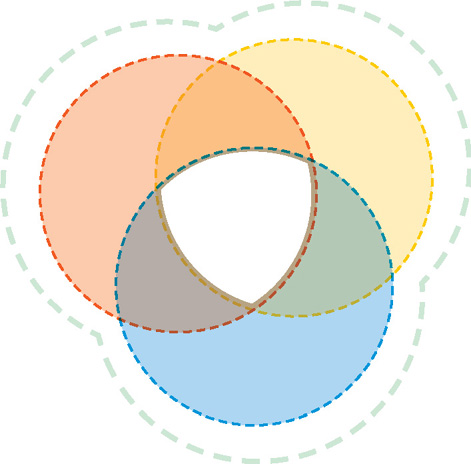
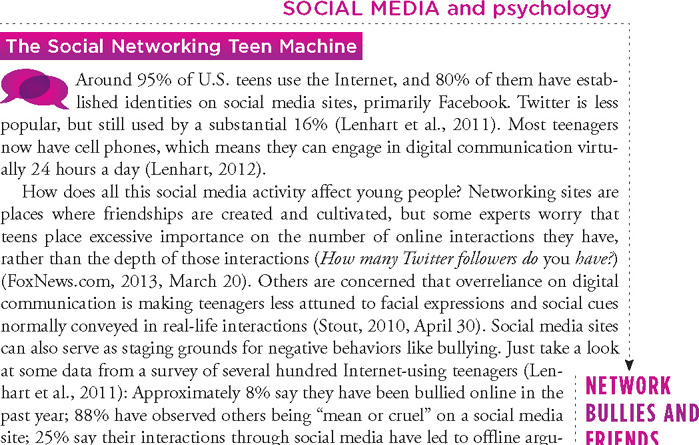
| Topics grouped under this book’s themes can be found on the listed pages: |
 from the pages of SCIENTIFIC AMERICAN
from the pages of SCIENTIFIC AMERICANMurder, She Wrote, p. 19 Electric Surprise, p. 77 Physically Out of Tune, p. 112 Brain Freeze Explained, p. 122 More Than Just a Bad Dream, p. 159 The Taste of Immune Suppression, p. 197 Why Testing Boosts Learning, p. 238 What Marijuana Reveals About Memory, p. 272 Laughter Leads to Insight, p. 295 Changing Social Roles Can Reverse Aging, p. 375 Lunchtime Leniency, p. 398 Happy in the Morning, p. 418 Crying Women Turn Men Off, p. 441 Open Mind, Longer Life, p. 493 Meditate that Cold Away, p. 532 Inflammation Brings on the Blues, p. 564 A Brighter Tune, p. 589 Following the Crowd, p. 653 Rudeness on the Internet, p. 657 |
 SOCIAL MEDIA and psychology
SOCIAL MEDIA and psychologyFacebook in the Brain, p. 76 Can’t Get Enough, p. 176 Contagious Behaviors, p. 209 The Social Networking Teen Machine, p. 365 Network Needs, p. 394 It’s Written All Over Your Facebook, p. 498 Therapist or Friend?, p. 617 Relationships Online, p. 660 |
 didn’t SEE that coming
didn’t SEE that comingSponge Bob on the Brain, p. 40 The Scent of Money, p. 119 Rescuing Animals with Classical Conditioning, p. 196 Monkey See, Monkey Do: Can Apes Learn by Observation, Too?, p. 222 Google Brain, p. 262 The Perks of Being Bilingual, p. 306 Inside the Brain of a Rapper, p. 325 Great Ape Sex, p. 446 “On Being Sane in Insane Places,” p. 549 Virtual Reality Exposure Therapy, p. 597 Something Doesn’t Feel Right, p. 633 |
 nature AND nurture
nature AND nurtureWhy Dyslexia?, p. 322 Destiny of the Difficult Baby, p. 357 The Case of Bruce Reimer, p. 437 The Funny Thing About Personality, p. 469 Four Sisters, p. 570 Why The Attitude?, p. 632 |
 across the WORLD
across the WORLDThe Many Faces of Facebook, p. 32 The Plastic Brains of Our Children, p. 74 Colors and Culture, p. 109 Memory and Culture, p. 254 Problem Solving in Different Cultures, p. 297 Death in Different Cultures, p. 377 A Cross-Cultural Look at Eating Disorders, p. 402 Can You Feel the Culture?, p. 412 Homosexuality and Culture, p. 445 What They Are Doing in Bed … or Elsewhere, p. 449 Culture of Personality, p. 492 The Stress of Starting Anew, p. 512 The Many Faces of Social Anxiety, p. 556 Know Thy Client, p. 614 Slackers of the West, p. 648 |
 CONTROVERSIES
CONTROVERSIESConflicted Feelings About Cochlear Implants, p. 115 False Claims About Hypnosis, p. 179 Spotlight on Spanking, p. 215 The Debate over Repressed Childhood Memories, p. 265 Do Animals Use Language, Too?, p. 311 Problems with Polygraphs, p. 410 Are You My Natural Selection?, p. 459 How Birth Order May—or May Not—Affect Your Personality, p. 480 Meditate on This, p. 531 The Stanford “Prison,” p. 656 |
 THINK again
THINK againWhat’s in a Number?, p. 17 Psychology in the Media, p. 42 Male Brain, Female Brain, p. 65 Extrasensory Perception, p. 133 7 Sleep Myths, p. 162 Chickens Can’t Play Baseball, p. 205 Think Positive Reinforcement, p. 217 Multitasking and Memory, p. 243 Fearing the Friendly Skies, p. 301 Let Them Eat Cake, p. 303 Language Without Sound, p. 309 Genie the “Feral Child,” p. 350 Sext You Later, p. 450 Think Positive, p. 535 The Insanity Plea, p. 545 |

|
1. from the pages of SCIENTIFIC AMERICAN Offers thought-provoking articles from Scientific American, a publication with a long history and reputation for providing accessibly written reports on cutting-edge scientific findings. We have chosen brief articles that focus on some of the most fascinating aspects of behavior and mental processes, which logically fit within the content of the chapter. Example: “Rudeness on the Internet” (Chapter 15). |

|
2. SOCIAL MEDIA and psychology Highlights contemporary research exploring how social media applications, such as Facebook and Twitter, impact behavior. Example: “Facebook in the Brain” (Chapter 2). |

|
3. didn’t SEE that coming Raises student interest by detailing an unexpected, high-interest, and newsworthy development related to the chapter’s focus. Example: “Monkey See, Monkey Do: Can Apes Learn by Observation, Too?” (Chapter 5). |

|
4. nature AND nurture Presents important findings related to twin studies, genetic research, and heritability studies. Students will get a sense of how difficult it is to gauge the relative degrees to which nature and nurture shape human behavior. Example: “The Case of Bruce Reimer” (Chapter 10). |

|
5. across the WORLD Focuses on cross-cultural studies, highlighting salient findings on behavior variation across cultures. Example: “Death in Different Cultures” (Chapter 8). |

|
6. CONTROVERSIES Examines debates over contemporary research and provocative issues in the psychological community. Example: “Conflicted Feelings About Cochlear Implants” (Chapter 3). |

|
7. THINK again Helps students zero in on key concepts or deconstruct popular psychological myths, providing a fun and interesting way to hone their critical thinking skills. Example: “Fearing the Friendly Skies” (Chapter 7). |
Connections: Emphasizing the “Big Picture”
Frequently occurring short asides point out conceptual links across chapters.
As instructors, we have spent years consistently pointing out important conceptual relationships among psychology topics and subdisciplines. Research by Worth Publishers confirms that the vast majority of instructors (over 90%) believe it is important for students to grasp the “big picture” issues of psychology. Yet most texts fall short in this respect. Many present psychology’s subdisciplines as “silos” or independent areas of study and then, in an attempt to counter this limitation, include brief cross-references (frequently limited to a page number), or boxed inserts that are nicely annotated, but used too infrequently.
With considerable help from our reviewers, we believe we’ve overcome this longstanding problem. Beyond the introductory chapter, students will encounter numerous Connections, clearly annotated to establish the most important conceptual relationships across chapters. In Chapter 6 on memory, for example, we connect our discussion of attention to the topic of consciousness (Chapter 4), pointing out that we can only attend to, and thus remember, a certain amount of information at any given time. In Chapter 8 on human development, we link our discussion of language development to the principles of learning (Chapter 5), noting that operant conditioning and observational learning play a role in language acquisition. For those instructors who wish to test on these connections, related questions are provided and earmarked within our Test Bank.
CONNECTIONS
In Chapter 1 we presented the four major goals of psychology: describe, explain, predict, and control behavior. These four goals guide psychologists’ investigation of how biology influences behavior. As you read through this chapter, try to keep these goals in mind.
From Administrator to Adjunct: Assessment That Helps
Our assessment components encourage students to become more proactive about learning.
In the interest of more student engagement, psychology instructors continue to request that authors provide more applications and exercises. We have noted that the use of these “learning by doing” tools has become increasingly popular and very effective in our own classrooms. Accordingly, our chapters contain Try This exercises that ask students to apply key concepts by performing simple activities. These exercises are typically fast and easy-to-do, and reinforce chapter content. For example, in Chapter 7 on cognition, we provide students with a list of six words and ask them to create as many sentences as possible. The point of this activity is to show that language is a creative medium. In Chapter 9 on motivation and emotion, we ask students to hold a pen in their mouth in two different ways and then reflect on how they feel. The results of this mini-experiment demonstrate the facial feedback hypothesis.

Another key pedagogical tool is the Show What You Know at the end of each major section. Our questions are carefully tied to the chapter’s learning objectives, and rather than limit their assessment purpose to recall and recognition, each set includes one or more questions that require application and conceptual synthesis. In turn, these questions serve to continuously remind students of the importance of achieving a deeper understanding of key principles. A typical example of such a question comes from Chapter 2 on biology and behavior: “When confronted with a potentially threatening situation, the sympathetic nervous system sometimes prepares for ‘fight or flight’ and/or ‘tend and befriend.’ How would you explain these two very different responses using the evolutionary perspective?”

As instructors, we understand the value of both formative and summative assessment. We’ve read the research and we have seen it play out in the classroom: Students learn better when they are tested on the material. But testing needn’t be restricted to high-stakes exams and stressful pop quizzes. We can build assessment into the learning process using end-of-section and end-of-chapter questions that reward students for reading carefully and encourage them to think critically. This is the purpose of our Show What You Know and Test Prep features. We can also incorporate fun explorative activities where appropriate (the Try This feature), and give students the opportunity to challenge themselves further with online assessment. Worth’s research-driven LearningCurve adaptive quizzing system (available via LaunchPad) provides students with formative assessment and immediate and personalized feedback. We, the authors, have written the entire bank of quiz questions for LearningCurve, so instructors and students can be confident that the online formative assessment is seamlessly aligned with the text.
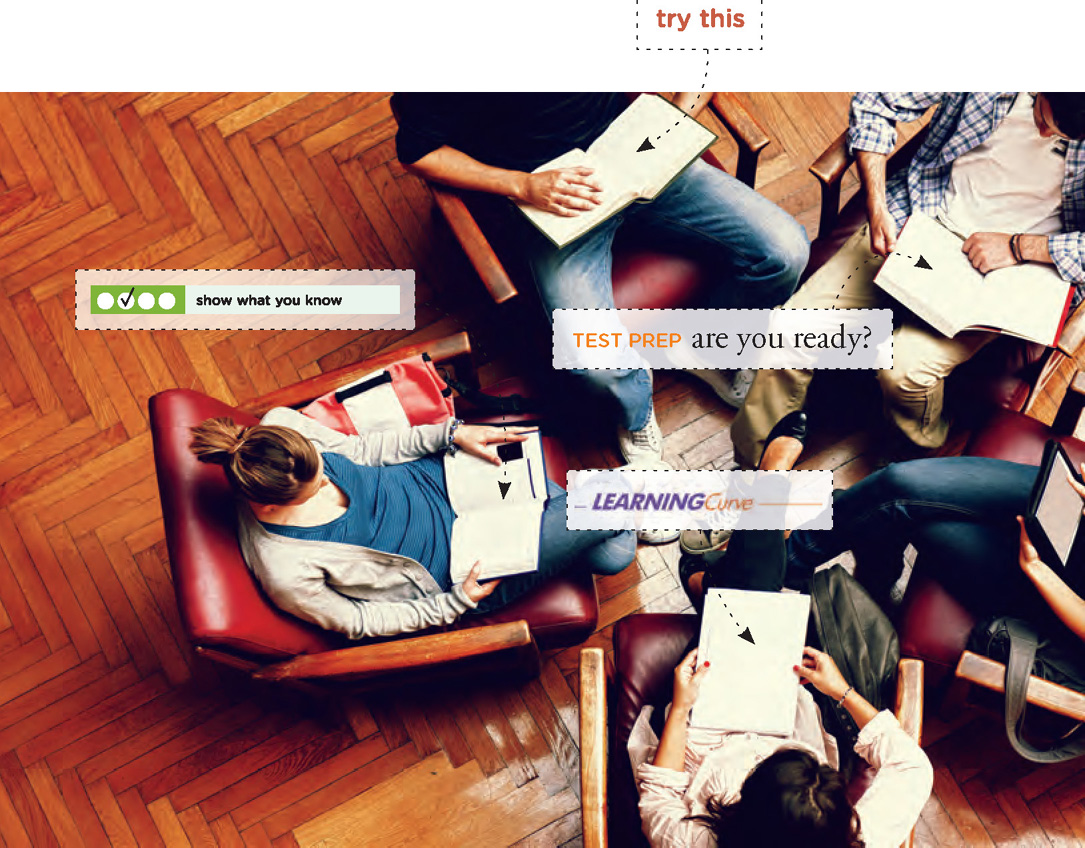
Alignment with the American Psychological Association and Disciplines Beyond Psychology
APA Learning Guidelines 2.0
We aim to prepare students for successful careers in psychology and other fields. For this reason, we have aligned our content with the newly revised goals of psychology’s principal professional organization, the American Psychological Association (APA). Even more granular alignment can be found in our Test Bank, which allows instructors to sort questions by APA learning goal.
ALIGNMENT WITH APA LEARNING GUIDELINES 2.0
GOAL 1: knowledge base in psychology
APA LEARNING OBJECTIVES:
- 1.1 Describe key concepts, principles, and overarching themes in psychology
- 1.2 Develop a working knowledge of psychology’s content domains
- 1.3 Describe applications of psychology
APA Learning Goal 1 aligns with the following Scientific American: Psychology content and Scientific American: Psychology objectives (numbered by chapter).
CHAPTER 1: 1.1–1.11
CHAPTER 2: 2.1–2.16
CHAPTER 3: 3.1–3.15
CHAPTER 4: 4.1–4.12
CHAPTER 5: 5.1–5.15
CHAPTER 6: 6.1–6.15
CHAPTER 7: 7.1–7.12
CHAPTER 8: 8.1–8.21
CHAPTER 9: 9.1–9.15
CHAPTER 10: 10.1–10.11
CHAPTER 11: 11.1–11.15
CHAPTER 12: 12.1–12.12
CHAPTER 13: 13.1–13.11
CHAPTER 14: 14.1–14.12
CHAPTER 15: 15.1–15.12
APPENDIX A: Introduction to Statistics
APPENDIX B: Careers in Psychology
INTEGRATED THEMATIC features in each chapter
ALL CONNECTIONS in Chapters 2–15 and Appendix A
INFOGRAPHICS in each chapter
TRY THIS application activities in Chapters 1–9, 12, 14, 15, and Appendix A: Introduction to Statistics
LAUNCHPAD RESOURCES
LEARNINGCURVE
INSTRUCTOR’S RESOURCE MANUAL
GOAL 2: scientific inquiry and critical thinking
APA LEARNING OBJECTIVES:
- 2.1 Use scientific reasoning to interpret psychological phenomena
- 2.2 Demonstrate psychology information literacy
- 2.3 Engage in innovative and integrative thinking and problem solving
- 2.4 Interpret, design, and conduct basic psychological research
- 2.5 Incorporate sociocultural factors in scientific inquiry
APA Learning Goal 2 aligns with the following Scientific American: Psychology content and Scientific American: Psychology objectives (numbered by chapter).
CHAPTER 1: 1.7–1.11; Think Again: What’s in a Number?; Think Again: Psychology in the Media; and Didn’t See That Coming: Sponge Bob on the Brain; From the Pages of Scientific American: Murder She Wrote; Infographic 1.2: How to Read a Scientific Article; Infographic 1.3: The Scientific Method; Infographic 1.4: The Correlation Coefficient: What’s in a Number?; Infographic 1.5: The Experimental Method: Are You in Control?
CHAPTER 2: 2.12; Think Again: Male Brain, Female Brain; Social Media and Psychology: Facebook in the Brain; Infographic 2.3: Ways to Study the Living Brain
CHAPTER 3: 3.11, 3.15; Controversies: Conflicted Feelings About Cochlear Implants; Didn’t See That Coming: The Scent of Money; Think Again: Extrasensory Perception; From the Pages of Scientific American: Physically Out of Tune; From the Pages of Scientific American: Brain Freeze Explained; Infographic 3.4: Gestalt Organizational Principles: The Whole is Greater
CHAPTER 4: Nature and Nurture: What King of Sleeper Are You?; Think Again: 7 Sleep Myths; Controversies: False Claims About Hypnosis; From the Pages of Scientific American: More than Just a Bad Dream; Social Media and Psychology: Can’t Get Enough
CHAPTER 5: Didn’t See That Coming: Rescuing Animals with Classical Conditioning; Think Again: Chickens Can’t Play Baseball; Controversies: Spotlight on Spanking; Think Again: Think Positive Reinforcement; Didn’t See That Coming: Monkey See, Monkey Do: Can Apes Learn by Observation, Too?; From the Pages of Scientific American: The Taste of Immune Suppression; Infographic 5.1: Learning Through Classical Conditioning; Infographic 5.2: Learning Through Operant Conditioning; Infographic 5.3: Learning: Punishment and Reinforcement
CHAPTER 6: Think Again: Multitasking and Memory; Didn’t See That Coming: Google Brain; Controversies: The Debate Over Repressed Childhood Memories; From the Pages of Scientific American: Why Testing Boosts Learning; From the Pages of Scientific American: What Marijuana Reveals About Memory; Infographic 6.1: Sensory Memory; Infographic 6.2: Study Smarter: Methods of Improving Your Memory
CHAPTER 7: Think Again: Fearing the Friendly Skies; Think Again: Let Them Eat Cake; Didn’t See That Coming: The Perks of Being Bilingual; Think Again: Language Without Sound; Controversies: Do Animals Use Language Too?; Nature and Nurture: Why Dyslexia?; Didn’t See That Coming: Inside the Brain of a Rapper; From the Pages of Scientific American: Laughter Leads to Insight; Infographic 7.1: Concepts and Prototypes; Infographic 7.2: Problem Solving; Infographic 7.4: How Smart Are Intelligence Tests?
CHAPTER 8: 8.19; Think Again: Genie the “Feral Child”; Nature and Nurture: Destiny of the Difficult Baby; From the Pages of Scientific American: Changing Social Roles Can Reverse Aging; Infographic 8.1: Research Methods in Developmental Psychology; Infographic 8.3: Piaget’s Theory of Cognitive Development
CHAPTER 9: Controversies: Problems with Polygraphs; From the Pages of Scientific American: Lunchtime Leniency; From the Pages of Scientific American: Happy in the Morning; Infographic 9.2: Mechanisms in Hunger Regulation; Infographic 9.4: The Anatomy of Fear
CHAPTER 10: 10.11; Nature and Nurture: The Case of Bruce Reimer; Didn’t See That Coming: Great Ape Sex; Think Again: Sext You Later; Controversies: Are you My Natural Selection; From the Pages of Scientific American: Crying Women Turn Men Off
CHAPTER 11: Nature and Nurture: The Funny Thing About Personality; Controversies: How Birth Order May—or May Not—Affect Your Personality; From the Pages of Scientific American: Open Mind, Longer Life; Infographic 11.1: Ego Defense Mechanisms; Infographic 11.2: The Social-Cognitive Perspective on Personality; Infographic 11.3: Examining the Unconscious: Projective Personality Tests
CHAPTER 12: 12.2–12.3; Controversies: Meditate on This; Think Again: Think Positive; From the Pages of Scientific American: Meditate that Cold Away; Infographic 12.1: Physiological Responses to Stress; Infographic 12.2: The Process of Coping; Infographic 12.3: Stressed Out
CHAPTER 13: 13.9; Think Again: The Insanity Plea; Didn’t See That Coming: “On Being Sane in Insane Places”; Nature and Nurture: Four Sisters; From the Pages of Scientific American: Inflammation Brings on the Blues
CHAPTER 14: 14.10; Didn’t See That Coming: Virtual Reality Exposure Therapy; From the Pages of Scientific American: A Brighter Tune
CHAPTER 15: 15.10; Nature and Nurture: Why the Attitude?; Didn’t See That Coming: Something Doesn’t Feel Right; Controversies: The Stanford “Prison”; From the Pages of Scientific American: Following the Crowd; From the Pages of Scientific American: Rudeness on the Internet
APPENDIX A: Introduction to Statistics
DIVERSE CHARACTER profiles integrated throughout each chapter
INTEGRATIVE CONNECTIONS found in Chapters 2-15 and Appendix A
LAUNCHPAD
LEARNINGCURVE
INSTRUCTOR’S RESOURCE MANUAL
GOAL 3: ethical and social responsibility in a diverse world
APA LEARNING OBJECTIVES:
- 3.1 Apply ethical standards to evaluate psychological science and practice
- 3.2 Build and enhance interpersonal relationships
- 3.3 Adopt values that build community at local, national, and global levels
APA Learning Goal 3 aligns with the following Scientific American: Psychology content and Scientific American: Psychology objectives (numbered by chapter).
CHAPTER 1: 1.11; Across the World: The Many Faces of Facebook
CHAPTER 2: Across the World: The Plastic Brains of Our Children
CHAPTER 3: Across the World: Colors and Culture
CHAPTER 5: Social Media and Psychology: Contagious Behaviors
CHAPTER 6: Across the World: Memory and Culture
CHAPTER 7: Across the World: Problem Solving in Different Cultures
CHAPTER 8: Across the World: Death in Different Cultures; Social Media and Psychology: The Social Networking Teen Machine
CHAPTER 9: Across the World: A Cross-Cultural Look at Eating Disorders; Across the World: Can You Feel the Culture?; Social Media and Psychology: Network Needs
CHAPTER 10: Across the World: Homosexuality and Culture; Across the World: What They Are Doing in Bed…or Elsewhere
CHAPTER 11: Across the World: Culture of Personality; Social Media and Psychology: It’s Written All Over Your Facebook
CHAPTER 12: Across the World: The Stress of Starting Anew
CHAPTER 13: Across the World: The Many Faces of Social Anxiety
CHAPTER 14: 14.10; Across the Word: Know Thy Client; Social Media and Psychology: Therapist or Friend?
CHAPTER 15: 15.5–15.8, 15.11–15.12; Across the World: Slackers of the West; From the Pages of Scientific American: Rudeness on the Internet; Social Media and Psychology: Relationships Online; Infographic 15.3: Discrimination, Stereotype, and Prejudice
DIVERSE CHARACTER profiles integrated throughout each chapter.
GOAL 4: communication
APA LEARNING OBJECTIVES:
- 4.1 Demonstrate effective writing for different purposes
- 4.2 Exhibit effective presentation skills for different purposes
- 4.3 Interact effectively with others
APA Learning Goal 4 aligns with the following Scientific American: Psychology content and Scientific American: Psychology objectives (numbered by chapter).
CHAPTER 1: Infographic 1.2: How to Read a Scientific Article
CHAPTER 7: 7.8–7.9; Infographic 7.3: The Building Blocks of Language
CHAPTER 8: 8.8–8.9; Social Media and Psychology: The Social Networking Teen Machine
CHAPTER 9: 9.13; Social Media and Psychology: Network Needs; Across the World: Can You Feel the Culture?
CHAPTER 10: From the Pages of Scientific American: Crying Women Turn Men Off; Think Again: Sext You Later
CHAPTER 11: Nature and Nurture: The Funny Thing About Personality; Social Media and Psychology: It’s Written All Over Your Facebook
CHAPTER 14: Across the World: Know Thy Client; Social Media and Psychology: Therapist or Friend?
CHAPTER 15: 15.3–15.6, 15.12; From the Pages of Scientific American: Rudeness on the Internet; Social Media and Psychology: Relationships Online
SHOW WHAT YOU KNOW AND TEST PREP: Are you ready? assessment questions in each chapter; “You Asked, They Answered” Online Video Profile questions
TEST BANK essay questions
LAUNCHPAD
LEARNINGCURVE
INSTRUCTOR’S RESOURCE MANUAL
GOAL 5: professional development
APA LEARNING OBJECTIVES:
- 5.1 Apply psychological content and skills to career goals
- 5.2 Exhibit self-efficacy and self-regulation
- 5.3 Refine project-management skills
- 5.4 Enhance teamwork capacity
- 5.5 Develop meaningful professional direction for life after graduation
APA Learning Goal 5 aligns with the following Scientific American: Psychology content and Scientific American: Psychology objectives (numbered by chapter).
CHAPTER 1: 1.1
CHAPTER 2: Across the World: The Plastic Brains of Our Children
CHAPTER 3: From the Pages of Scientific American: Physically Out of Tune; Didn’t See that Coming: The Scent of Money
CHAPTER 4: Nature and Nurture: What Kind of Sleeper Are You?; From the Pages of Scientific American: More Than Just a Bad Dream; Think Again: 7 Sleep Myths
CHAPTER 5: Social Media and Psychology: Contagious Behaviors; Think Again: Think Positive
CHAPTER 6: 6.6; From the Pages of Scientific American: Psychology: Why Testing Boosts Learning; Think Again: Multitasking and Memory; Didn’t See That Coming: Google Brain; Infographic 6.2: Study Smarter: Methods of Improving Your Memory
CHAPTER 7: 7.5–7.7; From the Pages of Scientific American: Laughter Leads to Insight; Think Again: Let Them Eat Cake; Didn’t See That Coming: The Perks of Being Bilingual; Didn’t See That Coming: Inside the Brain of a Rapper; Infographic 7.2: Problem Solving; Infographic 7.3: The Building Blocks of Language
CHAPTER 8: Nature and Nurture: Destiny of the Difficult Baby; Social Media and Psychology: The Social Networking Teen Machine; From the Pages of Scientific American: Changing Social Roles Can Reverse Aging
CHAPTER 9: 9.1–9.7, 9.9; Social Media and Psychology: Network Needs
CHAPTER 11: 11.6–11.7; Across the World: Culture of Personality; From the Pages of Scientific American: Open Mind, Longer Life; Social Media and Psychology: It’s Written All Over Your Facebook; Infographic 11.1: Ego Defense Mechanisms
CHAPTER 12: 12.7, 12.10, 12.12; Across the World: The Stress of Starting Anew; Controversies: Meditate on This; From the Pages of Scientific American: Meditate That Cold Away; Think Again: Think Positive; Infographic 12.2: The Process of Coping; Infographic 12.3: Stressed Out
CHAPTER 13: Infographic 13.2: Suicide in the United States
CHAPTER 14: 14.11–14.12; From the Pages of Scientific American: A Brighter Tune; Didn’t See That Coming: Virtual Reality Exposure Therapy; Across the World: Know Thy Client; Social Media and Psychology: Therapist or Friend?
CHAPTER 15: 15.2–15.6, 15.8, 15.10–15.12; Across the World: Slackers of the West; From the Pages of Scientific American: Following the Crowd
APPENDIX B: Careers in Psychology
LAUNCHPAD
LEARNINGCURVE
INSTRUCTOR’S RESOURCE MANUAL
Psychology Content on the MCAT—Starting in 2015
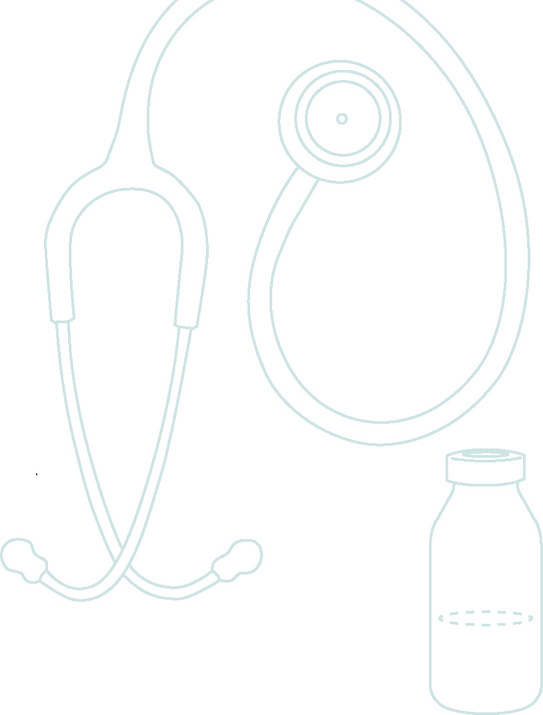
The Medical College Admission Test (MCAT) will begin including psychology on its exam in 2015. This new requirement stipulates that 25% of the test will include questions pertaining to the “Psychological, Social, and Biological Foundations of Behavior.” Many of these topics are covered during the introductory psychology course, so we’ve made a useful chart that aligns the psychology topics to be covered on the MCAT with the location of that material in the book. A sample version appears below, and the entire chart is available for download from the Scientific American: Psychology page at worthpublishers.com.
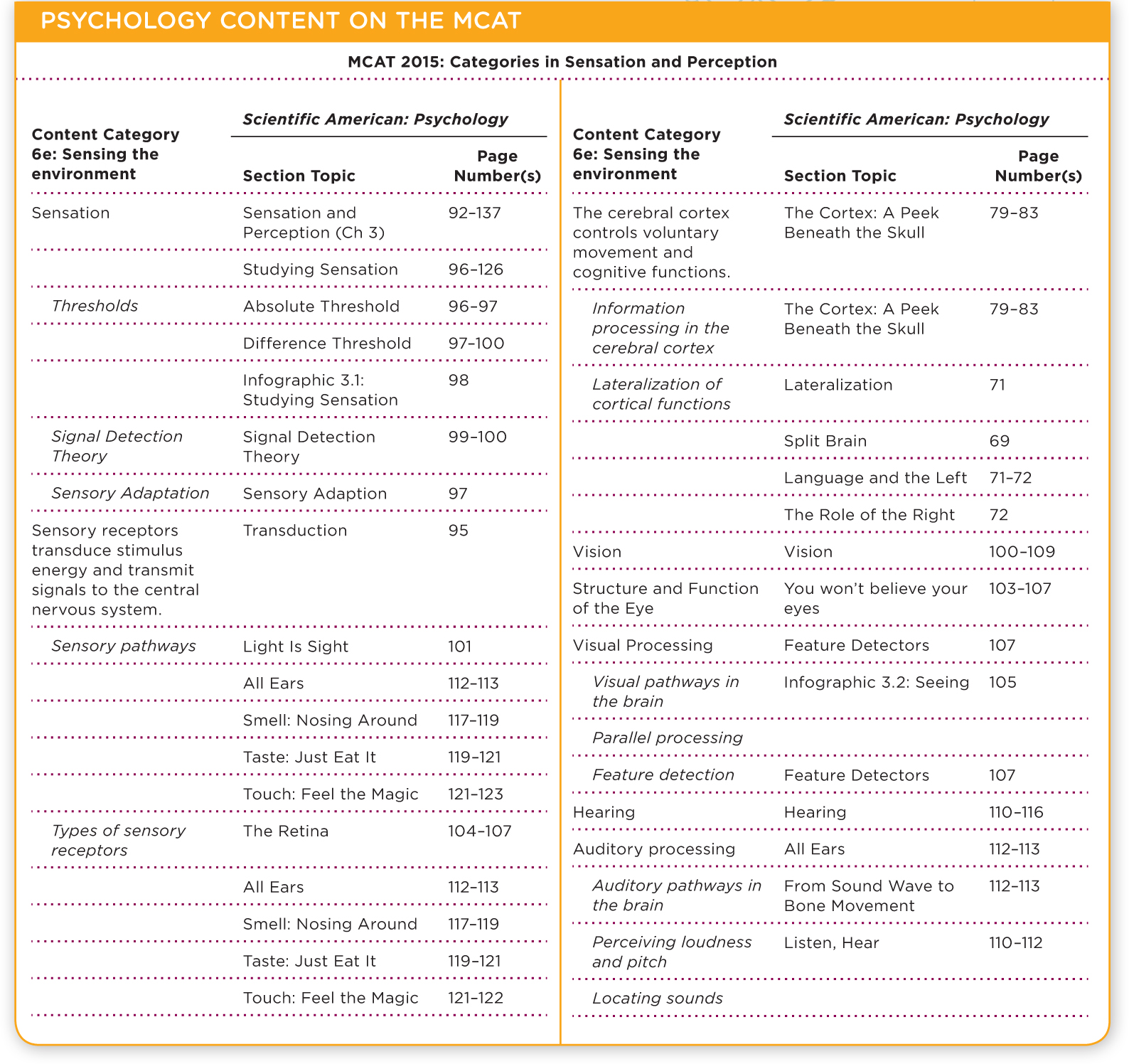


15 Chapters, 27 Ordinary People, 27 Extraordinary Stories
The scope and sequence of our text are consistent with the typical 15 chapters covered in most introductory psychology books. We’ve also included two appendices. The first provides coverage of statistical concepts, allowing instructors to choose how deeply they want to explore statistics and experimental design. The second addresses careers in psychology. Both appendices supplement the related material in Chapter 1.
We have described the innovations that set this book apart, but how do they all connect? If we could identify the two unifying themes of this textbook, they would be the following: thinking critically and thinking positively. Our experiences in academia and journalism have taught us to question what we see on television, encounter on the Internet, read in newspapers, and hear in conversation. Being a scientist means being a critical thinker, and we have made a conscious effort to impart a healthy dose of skepticism in our readers: highlighting areas where research is preliminary or inconclusive, where correlation does not imply causation, and where human bias may color research findings.
Being skeptical does not mean being negative, however. We believe that human beings are intrinsically good: capable of learning, evolving, and contributing to society in positive ways. The people described in this book display the extraordinary sensibility and strength that all of us possess at some deep level. Their stories, and the chapters and content they illustrate, can be taught in any order. However, we do recommend that students start with Chapter 1, which lays the groundwork for all the other chapters. Here is a brief overview of what lies ahead:

chapter 1 introduction to the science of psychology demonstrates how psychology was intensely relevant to the 33 Chilean miners who spent over 2 months trapped underground. One of the key pedagogical tools in this chapter is an elegant infographic showing students how to read a research article.
chapter 2 biology and behavior interweaves psychology concepts with the story of Iraq War veteran Brandon Burns, who experienced a miraculous recovery from a brain injury, and Christina Santhouse, a young woman who has thrived in school, work, and life in general—after having an operation to remove nearly half her brain. One of the highlights in this chapter is a Social Media and Psychology feature revealing a relationship between the number of Facebook friends and structural features of the brain.
chapter 3 sensation and perception tells the story of Liz Allen, a mother raising deaf and blind triplets. This chapter is rich with colorful and engaging perceptual illusions.

chapter 4 consciousness offers a peek into the life of anesthesiologist Dr. Robert Julien, and explores the experiences of Matt Utesch, a young man with narcolepsy. Here, we feature a detailed infographic illustrating how different drugs combine to amplify or dampen neural activity.
chapter 5 learning illustrates the principles of classical conditioning, operant conditioning, and observational learning using the examples of basketball pro Jeremy Lin and blind marathon runner/triathlete Ivonne Mosquera-Schmidt. Demonstrating the application aspect of psychological research, a Didn’t See That Coming feature explores how conservationists are using conditioned taste aversion to protect endangered species.
chapter 6 memory tells the poignant tale of the amnesiac Clive Wearing and follows Dorothea Seitz, a memory expert, to the World Memory Championships. A Think Again feature gets students to think critically about multitasking while doing schoolwork.
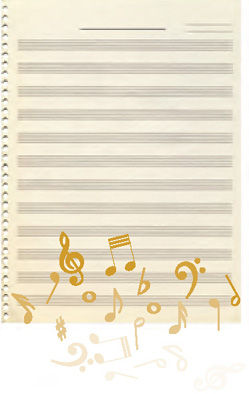
chapter 7 cognition, language, and intelligence explores the cognitive breakdown of stroke survivor Dr. Jill Bolte Taylor and the reading difficulties of actor Orlando Bloom, who has dyslexia. A From the Pages of Scientific American feature reveals that a good laugh can set the stage for a flash of insight.
chapter 8 human development details the lives of two community college students—Jasmine Mitchell, a single mother juggling education and career responsibilities with child rearing, and Chloe Ojeah, a young woman who cares for her aging grandparents between classes and homework. A useful infographic compares cross-sectional, longitudinal, and cross-sequential research designs.
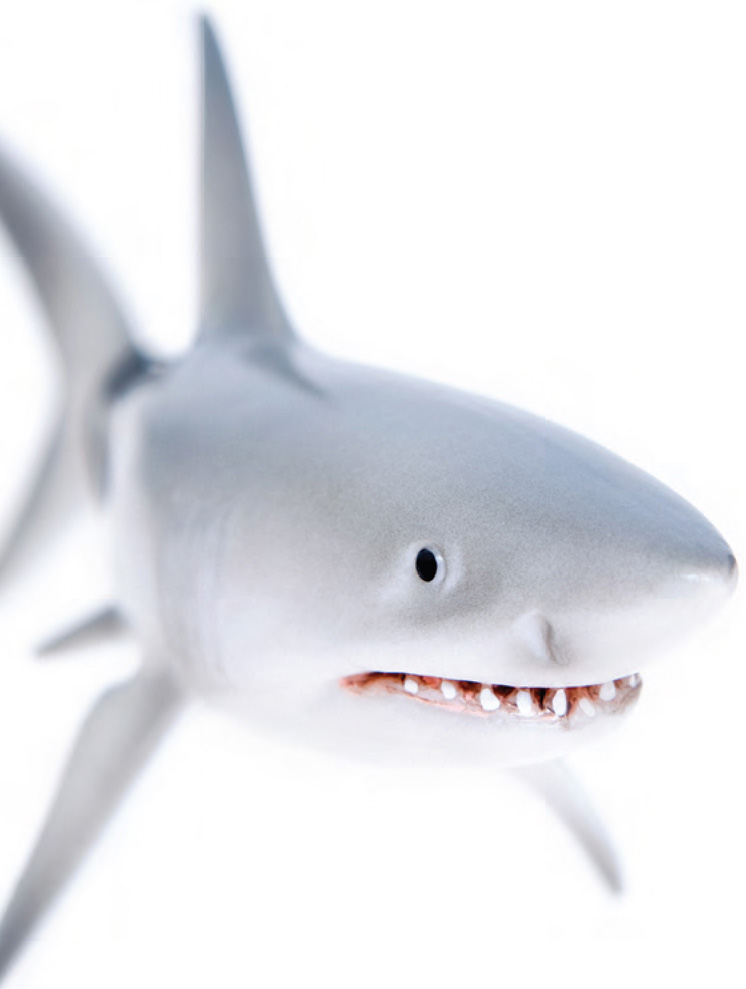
chapter 9 motivation and emotion relates the life experiences of Mohamed Dirie, a young man who immigrated to the United States from Somalia, and Lucy Mangum, a child who survived a shark attack. A Social Media and Psychology feature explores how people use Facebook to satisfy psychological needs (or not).
chapter 10 sexuality and gender presents insights on gender and sex from the perspectives of Stephen Patten, a male nurse, and Dr. Stephanie Buehler, a female sex therapist. A Think Again feature examines the risks and benefits of “sexting,” or sending sexually explicit text messages.
chapter 11 personality introduces the digital personality of Tank, a robot receptionist at Carnegie Mellon University. A From the Pages of Scientific American feature unveils the relationship between longevity and the personality trait of openness.

chapter 12 stress and health examines stress from the perspectives of Eric Flansburg, a police officer, and Kehlen Kirby, an emergency medical services (EMS) provider. An Across the World feature looks at the stressors associated with immigration.
chapter 13 psychological disorders tells the story of Ross Szabo, a young man with bipolar disorder, and Melissa Hopely, a young woman with obsessive-compulsive disorder. Here, we have carefully aligned chapter content with the changes outlined in the DSM-5.
chapter 14 treatment of psychological disorders focuses on Dr. Dan Foster, a psychologist working on an Indian reservation, and Laura Lichti, a therapist just beginning her career. An Across the World feature explores some of the cultural issues therapists should consider when serving a diverse client population.

chapter 15 social psychology explores the life of Olympic runner Julius Achon, who adopted 11 orphans from his homeland of Uganda. In fact, his story is so inspirational that we chose to have him adorn our cover. This chapter also includes the story of Joe and Susanne Maggio, a married couple whose union was made possible by the Internet, and a From the Pages of Scientific American feature that helps explain why people can be so cruel on the Internet.
Multimedia to Support Teaching and Learning
LaunchPad for Scientific American: Psychology
LaunchPad offers Worth’s acclaimed online content curated by the authors themselves and organized for easy assignability. LaunchPad includes a full e-Book, LearningCurve quizzing, student self-assessment, simulations, videos, instructor resources, and an easy-to-use gradebook. It also includes Video Profile Assessments—versions of the text’s Online Video Profiles that contain questions to help students connect the book’s stories to core content. Infographic Assessments within the e-Book turn the printed infographics into mini-quizzes.

LearningCurve quizzing combines adaptive question selection, personalized study plans, and state-of-the-art question analysis reports. Written by Deborah Licht and Misty Hull, LearningCurve provides a unique learning experience—a gamelike feel that keeps students engaged in the material while helping them learn the concepts.
LaunchPad is a breakthrough user interface distinguished by its powerful simplicity. Learn more and request access at worthpublishers.com/launchpad.
e-Book for Scientific American: Psychology
With LaunchPad, the Scientific American: Psychology e-Book integrates the text with an assortment of media-powered learning tools, and a variety of customization options for both students and instructors. Worth’s acclaimed e-Book platform was developed by a cognitive psychologist (PhD, Yale University) who taught undergraduate psychology at the University of Massachusetts. Scientific American: Psychology is also available as an online or downloadable e-Book at CourseSmart (www.coursesmart.com).
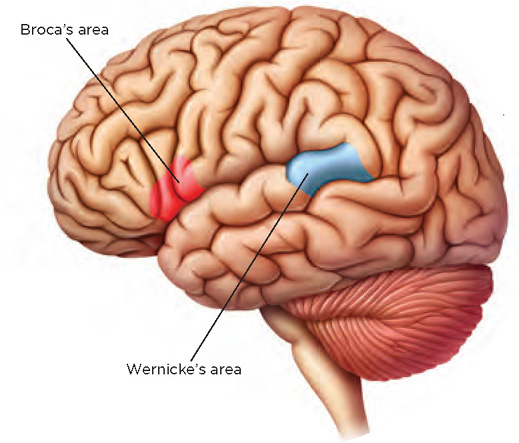
Presentation and Video Resources
Worth Video Anthology for Introductory Psychology
Instead of having to search through all of Worth’s vast video collection, users can now access a “best of” collection that showcases 250 videos from:
- Video Tool Kit for Introductory Psychology (including 30 new videos co-produced by Nature and Scientific American)
- Digital Media Archives, Volumes 1 and 2
- Scientific American Frontiers Teaching Modules, Third Edition
Interactive Presentation Slides for Introductory Psychology
This series of “next generation” PowerPoint® lectures gives instructors a dynamic, yet easy-to-use way to engage students during classroom presentations. Each lecture provides opportunities for discussion and interaction, and includes a wide array of embedded video clips and animations (including activities from Worth’s ActivePsych).

ActivePsych: Classroom Activities, Projects, and Video Teaching Modules
ActivePsych is a series of interactive activities and video clips that will captivate your classroom and inspire student participation, with minimal instructor preparation necessary. ActivePsych includes more than 30 interactive activities, PowerPoint®-based demonstrations, 22 new short video clips, plus the new Scientific American Frontiers Teaching Modules, Third Edition.
Presentation Slides
- Illustration Slides feature all of the text art and illustrations (including infographics, tables, charts, and graphs) in PowerPoint® format.
- Lecture Slides focus on key concepts and themes from the text, and feature tables, graphs, and figures from both the text and selected videos from the Worth Anthology.
- Chapter Photos, Figures, and Tables give you access to all of the photographs from Scientific American: Psychology, organized by chapter.
Assessment Tools
Diploma Computerized Test Bank (Windows 6.71 and Macintosh 6.71 on one CD-ROM)
This comprehensive Test Bank includes approximately 4,000 multiple-choice, true/false, and essay questions. Each question is keyed to a learning objective, page and section reference, and APA goal. Questions are also rated for level of difficulty and identified as either factual/definitional or conceptual/application. The CD-ROM allows you to add an unlimited number of questions, edit questions, format a test, scramble questions, and incorporate pictures, equations, or multimedia links. The computerized Test Bank also allows you to export into a variety of formats compatible with many Internet-based testing products.
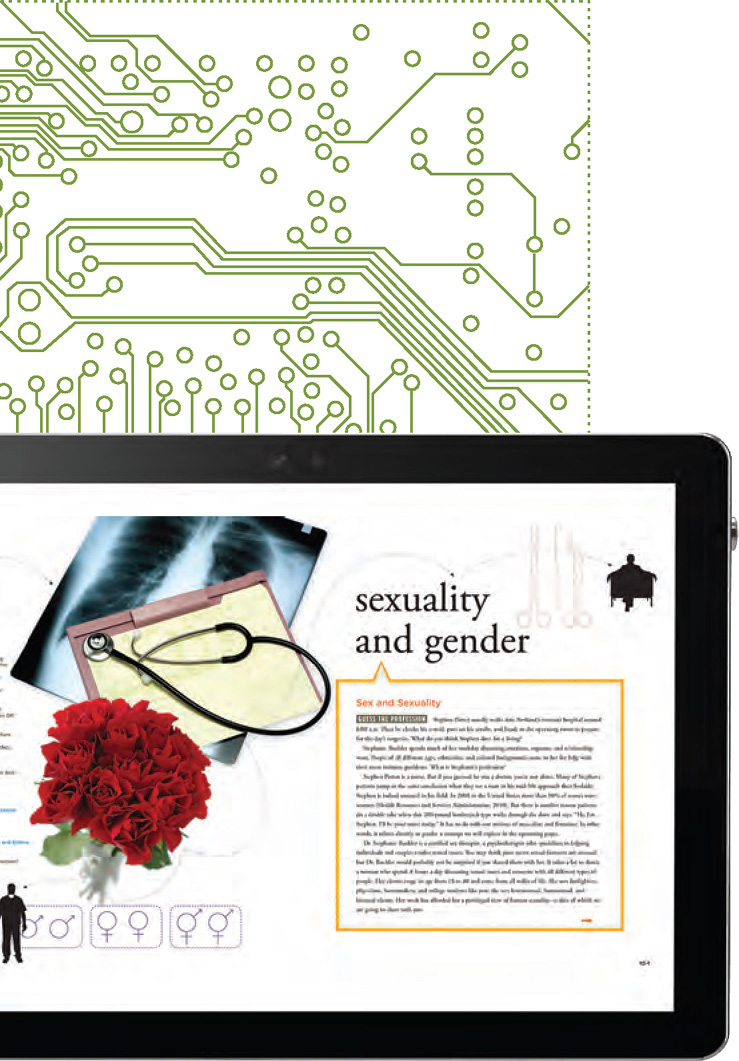
iClicker Radio Frequency Classroom Response System
Offered by Worth Publishers, in partnership with iClicker.
Instructor’s Resources
Instructor’s Resource Manual
Written and compiled by experienced instructors of introductory psychology, the Instructor’s Resource Manual is the perfect tool for busy instructors who want to make the introductory psychology course more engaging for their students. This manual includes chapter objectives; chapter summaries; lecture, discussion, and classroom activity suggestions organized by section; multimedia suggestions from Worth’s rich video and student media offerings; plus tips for embracing new classroom technologies and teaching online.
Faculty Lounge
Free to psychology instructors, Worth’s Faculty Lounge is the place to find and share teaching ideas and materials that work best in the classroom. In no time, you’ll be browsing through a wealth of publisher- and peer-provided resources—or uploading your own. All resources in the Lounge are faculty-reviewed for accuracy and quality, which means you can feel calm, cool, and collected in front of your class at a moment’s notice!
- Videos, animations, and images
- News articles
- Lecture ideas and classroom activities
- Useful Web sites and images
Explore at http://psych.facultylounge.worthpublishers.com.
TLC (Teaching, Learning, Community)
A breakthrough teaching service supervised by a team of faculty experts, Worth’s TLC allows you to:
- Consult with leading psychology educators
- Participate in online symposia and events that may qualify for continuing education credit
- Share teaching tips and challenges
- Connect with your colleagues
Explore at http://worthpublishers.com/tlc.
Student Study and Research Tools
Psychology and the Real World, FABBS Foundation
This reader provides a collection of brief, personal, original essays, ranging in length from 2,500 to 3,500 words, in which leading academic psychologists describe what their area of research has contributed to society. Free when packaged.
Pursuing Human Strengths: A Positive Psychology Guide, Martin Bolt, Calvin College
This workbook provides an overview of nine positive personality traits, such as hope, self-respect, and joy. It also offers self-assessment tools to help students gauge how much of the trait they have developed, and how they might work toward fostering these traits. Free when packaged.

Enhanced Course Management Solutions and Single Sign-On
Blackboard, Angel, Desire2Learn, Moodle, Sakai, and more
Course packs offer a completely integrated solution that you can easily customize and adapt to meet your teaching goals and objectives. Examples of instructor content now included in our enhanced solutions are the complete Test Bank, the complete Instructor’s Resources, a variety of PowerPoint® slides, and much more. Course packs are available at www.bfwpub.com/lms. For information about arranging single sign-on/grade-sync between your department’s course management system and Launch-Pad, inquire with your local sales representative.
Acknowledgments
Four years ago, we met in Manhattan to discuss the possibility of creating a bold new psychology textbook. Sipping coffee and watching taxis zoom past the window, we discussed our burgeoning partnership with Worth Publishers, and our excitement about creating an introductory text that would bring relevance and student engagement to a whole new level. We believe that dream has finally materialized, but it would not have been possible without the hard work and talent of reviewers, focus group attendees, students, interview subjects, contributors, and editors.
We are forever grateful to publisher Kevin Feyen and acquisitions editor Erik Gilg for having the vision to go forward with this project, and believing in our ability to execute it. Thank you for bringing the three authors together and for your continued friendships. President Liz Widdicombe and Senior Vice President Catherine Woods, what an honor it has been to work with your exceptional team. Sales representative Matt Ours, we joke with you about “getting us into this mess!” but it turns out we really do love this mess. Thank you for planting the seed for our involvement at Worth.
Early manuscript developer Jim “period-end-of-sentence” Strandberg, you guided us through the early drafts, supplying the right balance of honest feedback and kind encouragement. Your steady stream of insight and humor kept us afloat while we navigated the unknown waters of textbook publishing. Acquisitions editor Rachel Losh, you picked up this project and ran with it in all the right directions. It’s hard to imagine a more enterprising and market-savvy leader to see this project through. Thank you for listening and responding to our concerns, trusting our judgment about critical issues, and throwing your heart and soul into this book. Editorial assistant Katie Garrett, you juggled a variety of essential editing and production responsibilities. Thank you for your hard work. Manuscript consultant Moira Lerner, your guidance was essential during the development process. Thank you for your painstaking chapter reviews and sound advice.
Working by our side from development through production was developmental editor Marna Miller, whose brilliant ideas for infographics now appear as full-page spreads in every chapter of this book. Marna, you have repeatedly blown us away with your creative spins on concept presentation. Your figures and photos are original and thought provoking; students will be drawn in by their relevance and interest, just as we have been. Anne DeMarinis, Dawn Albertson, Emily Stark, and Leah Georges, thank you for making the infographics come to life so elegantly. Photo editor Cecilia Varas and photo researchers Jacqui Wong and Deborah Anderson, your patience and persistence have paid off; thank you for working so hard to secure use of the desired photographs; we know it was challenging.
Brad Rivenburgh, Glenn and Meg Turner of Burrston House, you came to this project just when we were in great need of your extensive publishing experience and vast fund of research knowledge. You knew what the market demanded, and you provided explicit directions for supplying it. Thank you for selecting an exceptional panel of reviewers, and distilling their feedback into practical suggestions for us to consider. The focus groups you organized have been an invaluable tool for fine-tuning our efforts.
Producing a high-quality college textbook is a formidable task, but no one is better qualified for this mission than project editor Robert Errera. Thank you, Rob, for maintaining such high standards and personally seeing to it that our requests were fulfilled. Director of Development Tracey Kuehn, you made the transition from development to production smooth and manageable—and perhaps more importantly, you kept us sane during production. We knew your heart was really in it when you spent part of your honeymoon with us! Copy editor Patti Brecht, we are grateful to you for going the extra mile to ensure consistency of content and copy. Art director Babs Reingold, what can we say? You are a design genius! Flipping through the pages of this textbook, we are dazzled by its uncomplicated beauty.
To all the managers, designers, illustrators, editors, and other team members with whom we did not have direct contact, please know that we are thoroughly impressed with your work; we feel lucky to have had you on our team. A huge thanks to production manager Sarah Segal, associate managing editor Lisa Kinne, layout designer Clea Chmela, chapter opener designer Charles Yuen, illustration coordinator Matthew McAdams, illustrator Todd Buck, designer Lyndall Culbertson, supplements production manager Stacey Alexander, and market development assistant Stephanie Ellis.
Peter Levin, John Philp, and Barbara Parks of Splash Studios, your videos give us goose bumps, and some of them move us to tears. Thank you for conveying the chapter stories in a way that was real, yet respectful to the interview subjects. No one could have done it better. Jessica Bayne, your guidance on this project has been invaluable.
Rachel Comerford and Gayle Yamazaki, you have provided essential support to us in our development of online learning activities. Thanks to your expertise, our readers can take full advantage of Worth’s online learning space, LaunchPad.
Marketing gurus Carlise Stembridge and Lindsay Johnson, thank you for helping us bond with the sales team and ensuring that real college students read this book! Without you, our work would be pointless. We also acknowledge the excellent work of Andrea Musick Page, who has developed the supplements, and Debra Hollister, who assissted with Appendix C—in addition to many other contributions.
We have benefited in countless ways from an exceptional group of academic reviewers. Some have been our greatest champions, and others our sharpest critics. We needed both. We are grateful for the hundreds of hours you spent examining this text, writing thoughtful critiques, and offering bright ideas—many of which we have incorporated into our text. This is your book, too.
Mary Beth Ahlum, Nebraska Wesleyan University
Winifred Armstead-Hannah, City College of Chicago, Richard R. Daley College
Sandra Arntz, Carroll University
Shaki Asgari, Iona College
Sherry Ash, San Jacinto College Community College
Diane Ashe, Valencia College, West
Nani Azman, University of Hawaii, Maui College
Rosenna Bakari, Des Moines Area Community College
Michael E. Barber, Sante Fe College
Nazira Barry, Miami Dade College, Wolfson
Holly Beard, Midlands Technical College
Patrick Bennett, Indiana State University
Garrett L. Berman, Roger Williams University
Leslie Berntsen, University of Southern California
John Bickford, University of Massachusetts, Amherst
David Biek, Middle Georgia State College
Andrew Blair, Palm Beach State College
Marilyn Bonem, Eastern Michigan University
Leanne Boucher, Nova Southeastern University
Saundra Boyd, Houston Community College
Amy A. Bradshaw, Embry-Riddle Aeronautical University
Karen Brakke, Spelman College
Lauren Brown, Mott Community College
Amy Buckingham, Red Rocks Community College
Michelle A. Butler, U.S. Air Force Academy
Judith Caprio, Rhode Island College
Jessica Carpenter, Elgin Community College
Gabriela Carrasco, University of North Alabama
Sharon Chacon, Northeast Wisconsin Technical College
Daniel Chadborn, Southeastern Louisiana University
Gabriela Chavira, California State University–Northridge
Regina Chopp, University of Southern California
Diana Ciesko, Valencia College–East
Shirley Clay, Northeast Texas Community College
Deborah Conway, Community College of Allegheny County, South Campus
Kristie Coredell-McNulty, Angelo State University
Cheryl Cotten, Wor-Wic Community College
Baine B. Craft, Seattle Pacific University
Margaret Davidson, Rockwall–Heath High School
Amber DeBono, Winston-Salem State University
David Devonis, Graceland University
Rebekah Phillips DeZalia, Coastal Carolina Community College
Amanda di Bartolomeo, University of California, Los Angeles
Matthew D. Diggs, Collin College
Evelyn Doody, College of Southern Nevada
Karen Trotty Douglas, Alamo Colleges, San Antonio College
Kimberly Duff, Cerritos College
Jeanne Edman, Consumnes River College
Mitchell Estaphan, Bristol Community College
Roel Evangelista, Community College of Baltimore–Essex
Frank Eyetsemitan, Roger Williams University
Kelvin Faison, Pasco Hernando Community College
Robert Fauber, Temple University
Dan Fawaz, Georgia Perimeter College–Clarkston
Christopher Ferguson, Stetson University
Frank M. Ferraro III, Nebraska Wesleyan University
Stephen Fox, University of Hawaii–Maui College
Lisa Fozio-Thielk, Waubonsee Community College
Susan Frantz, Highline Community College
Jeanette Gassaway, Ohio University–Chillicothe
Rachel Gentry, Ball State University
Sherry Ginn, Rowan–Cabarrus Community College
Gladys Green, State College of Florida
Jerry Green, Tarrant County College, Northwest
Donnell Griffin, Davidson County Community College
Bettye P. Griffin, West Hills Community College District
Lynn Haller, Morehead State University
Julie Hanauer, Suffolk County Community College
Keith Happaney, Lehman College
Christine Harrington, Middlesex County College
Carol Kozak Hawk, Austin Community College
Cathy Hawkins, North Hennepin Community College
Rickye Heffner, University of Toledo
Byron Heidenreich, Illinois State University
Bryan Hendricks, University of Wisconsin, Madison
Jennifer Higa-King, Honolulu Community College
Mia Holland, Bridgewater State University
Debra Hollister, Valencia College–Lake Nona
Amy Holmes, Davidson County Community College
Karen Y. Holmes, Norfolk State University
Nancy Honeycutt, Alamance Community College
Mary Susan Horton, Mesa Community College
Vivian Hsu, Rutgers University
Christopher Hubbell, Rensselaer Polytechnic Institute
Ken Hudson, Florida Community College
Mayte Insua-Auais, Miami Dade College–North
Judy Jankowski, Grand Rapids Community College
Joan Jensen, Central Piedmont Community College
Barry Johnson, Davidson County Community College
Jessica Jolly, Gloucester County College
Judith Josephs, Salem State University
Diana Joy, Community College of Denver
Nora Kametani, Nunez Community College
Carolyn Kaufman, Columbus State Community College
Zelida Keo-Trang, Saddleback College
Lynnel Kiely, City Colleges of Chicago, Harold Washington College
Yuthika Kim, Oklahoma City Community College
Cheri Kittrell, State College of Florida
Nicole Korzetz, Lee College
Michelle LaBrie, College of the Canyons
Cindy Lahar, York County Community College
Jennifer Lee, Cabrillo College
Juliet Lee, Cape Fear Community College
Kris Leppien-Christensen, Saddleback College
Christine Lofgren, University of California–Irvine
Pamela Joan Marek, Kennesaw State University
Alexander Marvin, Seminole State College of Florida
Kirsten Matthews, Harper College
Brent Mattingly, Ashland University
Cindy Matyi, Ohio University, Chillicothe Campus
Ashley Maynard, University of Hawaii
Dan McConnell, University of Central Florida
Cheryl McGill, Florence-Darlington Technical College
Lisa Moeller, Devry University
Thurla Moore, Tallahassee Community College
Kristie Morris, SUNY Rockland Community College
Julie Morrison, Glendale Community College
Paige Muellerleile, Marshall University
Robin Musselman, Lehigh Carbon Community College
Margaret Nauta, Illinois State University
Roderick Neal, Patrick Henry Community College
Ronn Newby, Des Moines Area Community College
John L. Oliver, Florida Community College
Jennifer Ounjian, Contra Costa College
Joanna Palmer, Baker College of Flint
Carol Pandey, Los Angeles Pierce College
Jan Pascal, Johnson County Community College
Linda Perrotti, University of Texas at Arlington
Kristin Price, Owens Community College
Judy Quon, California State University–Long Beach
Marianna Rader, Rockingham Community College
Barbara Radigan, Community College of Allegheny County
Elena Reigadas, Los Angeles Harbor College
Tanya Renner, Kapi‘olani Community College
Nan Rice, Springfield Tech Community College
Vicki Ritts, St. Louis Community College, Meramec
Michelle Robinson, Saddleback College
Fredric E. Rose, Palomar College
Karen Saenz, Houston Community College
Ronald Arthur Salazar, San Juan College
Carol Schachat, Orange Coast College
Rebecca E. Shepherd, College of the Canyons
Melinda Shoemaker, Broward College–North
Maria Shpurik, Florida International University
Joan Siebert, Community College of Allegheny County
Debra Silverman, Keiser University
Theresa Simantirakis, Wright College
Valerie A. Simon, Wayne State University
Karyn Skaar, Northeast Texas Community College
Don Smith, Everett Community College
Jerry Snead, Coastal Carolina Community College
Jonathan Sparks, Vance-Granville Community College
Jason Spiegelman, Community College of Baltimore County–Catonsville
Susan Nash Spooner, McLennan Community College
Chris Stanley, Winston-Salem State University
Betsy Stern, Milwaukee Area Technical College
Lara Tedrow, Tidewater Cimmunity College
Jennifer Thompson-Watson, City Colleges of Chicago, Kennedy–King College
Carole Toney, Polk State College
Elizabeth Tuckwiller, George Washington University
Mary Ann Valentino, Fresno City College
Jennifer M. Verive, Western Nevada College
Jeff Wachsmuth, Napa Valley College
Linda Walsh, University of Northern Iowa
Martha Weaver, Eastfield College
Melissa B. Weston, El Centro College
Tanya Whipple, Missouri State University
Ric Wynn, County College of Morris
Clare Zaborowshi, San Jacinto College Community College
Valerie Zurawski, St. John’s University
Thank you to the following student reviewers who provided valuable feedback and contributed questions for our video interviews:
Nicole Adamcyzk, Suffolk County Community College
Hilary Allen, Waubonsee Community College
Wes Armstrong, Georgia Perimeter College
Michael Baker, Suffolk County Community College
Michael Blackburn, Valencia College
Rebecca Blackburn, Valencia College
Zandi Bosua, Suffolk County Community College
Michael Burt, Valencia College
Joseph Calabrese, Waubonsee Community College
Paul Calzada, College of Southern Nevada
Tracy Cleary, Valencia College
James Ferguson, Suffolk County Community College
Amanda Flood, Suffolk County Community College
Marie Forestal, Valencia College
Casey Frisque, Northeast Wisconsin Technical College
Jordana Gaines, Suffolk County Community College
Chris Henderson, Georgia Perimeter College
Daisy Hidalgo, Valencia College
Matthew Hirschland, Georgia Perimeter College
Eric Hollenback, Waubonsee Community College
Michael Hollenback, Waubonsee Community College
Meridith Hollister, Valencia College
Zane Howard, Georgia Perimeter College
Caitlyn Ingram, Suffolk County Community College
Carole Keef, Valencia College
Zoe Kiefer, Waubonsee Community College
Donya Kobari, Georgia Perimeter College
Emily Kolk, Suffolk County Community College
Deanna Krane, Suffolk County Community College
Kayla Krasnee, Suffolk County Community College
Amanda Landolt, Northeast Wisconsin Technical College
Joline Ledbetter, College of Southern Nevada
Adam R. Leicht, Georgia Perimeter College
Amanda Meyer, Waubonsee Community College
Justin Oge, Tarrant County College–Northwest
Melissa Ortiz, Suffolk County Community College
Kimberly Peterson, Suffolk County Community College
Jacob Rodgers, Tarrant County College–Northwest
Jared Rodgers, Tarrant County College–Northwest
Chloe Rodriguez, Tarrant County College–Northwest
Sarah Rogers, Suffolk County Community College
Carolina Rosales, Waubonsee Community College
Amber Roth, Georgia Perimeter College
Danika Sanders, College of Southern Nevada
Olivia Schlabra, Georgia Perimeter College
Whitney Schmidt, Tarrant County College–Northwest
Cheyenne Sharpe, Tarrant County College–Northwest
Monica Sheehan, Tarrant County College–Northwest
Lydia Simone, College of Southern Nevada
Analiese Smith, Tarrant County College–Northwest
Victoria Vallance, Suffolk County Community College
Katherine Weinmann, Tarrant County College–Northwest
Stephanie Willes, College of Southern Nevada
Courtney Williams, Tarrant County College–Northwest
Owen Wood, Tarrant County College–Northwest
Sarah Woolf, Tarrant County College–Northwest
The following instructors graciously attended our focus groups. Their feedback both informed and influenced many key aspects of the text, as well as the resources that accompany it.
Anora Ackerson, Kalamazoo Valley Community College
Winifred Armstead-Hannah, City Colleges of Chicago, Richard R. Daley College
Marina Baratian, Brevard Community College
Nazira Barry, Miami College, Dade, Wolfson
Sonia Bell, Prince George’s Community College
Christopher Beverly, St. Johns River State College
Andrew Blair, Palm Beach State College
Marilyn Bonem, Eastern Michigan University
Leanne Boucher, Nova Southeastern University
Winfield Brown, Florence-Darlington Technical College
Alison Buchanan, Henry Ford Community College
Jessica Cail, Pepperdine University
Christie Cathey, Missouri State University
Shakiera Causey, Guilford Technical Community College
Ruby Christian-Brougham, Los Angeles Valley College
Julia Cohen, Los Angeles Pierce College
Bonnie Dennis, Virginia Western Community College
Dianne DeSousa, Prairie State Community College
Peggy Dombrowski, Harrisburg Area Community College
Susan Edwards, Mott Community College
Urminda Firlan, Kalamazoo Valley Community College
Amanda Frei, University of Phoenix
Sherry Ginn, Rowan–Cabarrus Community College
Marlene Groomes, Miami Dade–Homestead
Julie Hernandez, Rock Valley College
Sallie Herrin, Rowan–Cabarrus Community College
Debra Hollister, Valencia College–Lake Nona
Nancy Honeycutt, Alamance Community College
Kathleen Hughes-DeSousa, Pasco Hernando Community College
Susan Johnson, Cypress College
Paul Johnson, Oakton Community College
Lynda Karlis, Macomb Community College–Center Campus
Ken Kikuchi, College of Lake County
Andrew Kim, Citrus College
Cheri Kittrell, State College of Florida
Rachel Laimon, Mott Community College
Samuel Lamb, Tidewater Community College, Virginia Beach
Deborah Maher, Orange Coast College
Jeni Maijala, University of Phoenix
Richard Manley, Antelope Valley College
Randy Martinez, Cypress College
Myssie Mathis, Cape Fear Community College
Dan McConnell, University of Central Florida
Cheryl McGill, Florence–Darlington Technical College
David McGrevy, Palomar Community College
Russ McGuff, Tallahassee Community College
William Mellan, Hillsborough Community College–Plant City
Charles Miron, Community College of Baltimore County–Catonsville
Paulina Multhaupt, Macomb Community College–Center Campus
Sonia Nieves, Broward Community College–South Campus
James O’Brien, Tidewater Community College, Virginia Beach
Marco O’Brien, Milwaukee Area Technical College
Denise Orme, Golden West College
Jennifer Pemberton, Community College of Baltimore County–Catonsville
Kathleen Peters, Brevard Community College
Debbie Podwika, Kankakee Community College
James Previte, Antelope Valley College
Christopher Raye, Santa Fe College
Alan Richey, Wilkes Community College
Debra Rowe, Oakland Community College-Royal Oak
Carlos Sandoval, Cypress College
Spring Schaefer, Delta College
Alex Schwartz, Santa Monica College
Maria Shpurik, Florida International University
Morgan Slusher, Community College of Baltimore County–Essex
Steven Smith, California State University, Fullerton
Jason Spiegelman, Community College of Baltimore County–Catonsville
Eli Stav, Broward Community College–North Campus
Betsy Stern, Milwaukee Area Technical College
Cari Stevenson, Kankakee Community College
Krishna Stilianos, Oakland Community College–Highland Lakes
Shawn Talbot, Kellogg Community College
Anne Taylor-Spitzer, Antelope Valley College
Khia Thomas, Broward Community College–North Campus
Chris Thomas, Florence–Darlington Technical College
Jennifer Thompson-Watson, City Colleges of Chicago, Kennedy–King College
Lora Vasiliauskas, Virginia Western Community College
Rebekah Wanic, Grossmont College
Linda Weldon, Community College of Baltimore County–Essex
Rhonda Whitten, Tri-County Technical College
Steve Withrow, Guilford Technical Community College
Dreama Witt, Guilford Technical Community College
Brandy Young, Cypress College
There is one “unofficial” reviewer whose contributions cannot be quantified. Working behind the scenes from start to finish, reading every line of this text alongside us was Dr. Eve Van Rennes. Dr. Van Rennes, thank you for your intelligent critiques and unwavering support.
It goes without saying that this project would not have been the same without the hard work and dedication of our author team. Every sentence in this textbook has been a group effort: We have written and reviewed everything together. Our minds work differently and we have distinct skill sets, but we recognize and appreciate those in each other. Writing this book has been an arduous task (who knew three women could live on just a few hours of sleep every night?), but we have encouraged and supported each other along the way. We are more than a work team—we are lifelong friends. We should acknowledge that none of us would have written these words if it hadn’t been for our parents and grandparents, who made our education their top priority.
Last, but certainly not least, we would like to thank the extraordinary people whose life stories are woven throughout these chapters. We selected you because your stories touched and inspired us. Learning about your lives has helped us become more thoughtful and compassionate people. We believe you will have the same effect on college students across the country.
A special thanks to Julius Achon and the late James Fee, who made it possible for us to use the beautiful photo gracing the cover of this text. We hope the inclusion of Julius’s story raises awareness about the challenges facing people in Northern Uganda, and about the efforts of the Achon Uganda Children’s Fund.
Deborah M. Licht
Misty G. Hull
Coco Ballantyne